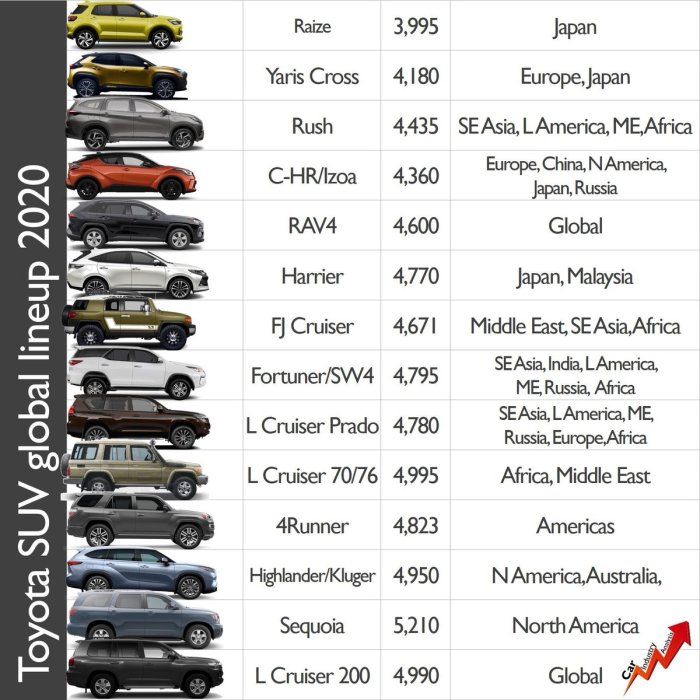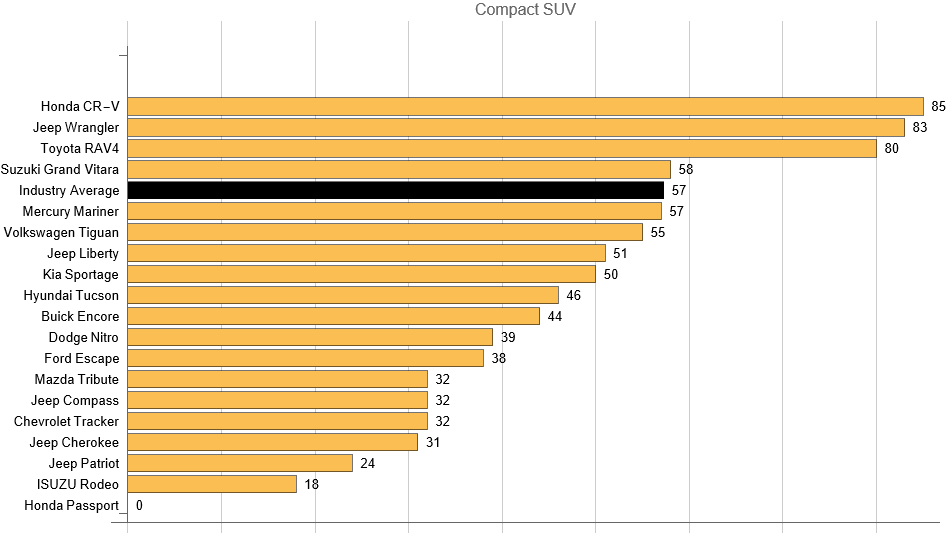According to the table on automobile and light SUV production, the automotive industry’s backbone, this analysis delves into the intricate world of automobile and light SUV production, unraveling its significance, influencing factors, and key metrics. Exploring production capacity, utilization, processes, technologies, costs, efficiency, regional trends, and future projections, this comprehensive overview sheds light on the dynamic landscape of vehicle manufacturing.
From market demand to technological advancements, the factors shaping production trends are examined, emphasizing their impact on volume, capacity utilization, and production efficiency. Key production processes, including automation and digitalization, are scrutinized, highlighting their benefits and challenges.
Automobile and Light SUV Production Overview: According To The Table On Automobile And Light Suv Production

Automobile and light SUV production plays a crucial role in the global automotive industry, contributing significantly to economic growth and job creation. Production trends are influenced by factors such as market demand, economic conditions, technological advancements, and government policies.
Key production metrics include volume, capacity utilization, and production efficiency. Volume measures the number of vehicles produced, capacity utilization assesses the utilization of production facilities, and production efficiency measures the output relative to the resources consumed.
Key Production Metrics
| Metric | Definition | Importance |
|---|---|---|
| Volume | Number of vehicles produced | Indicates production output and market demand |
| Capacity Utilization | Ratio of actual production to maximum possible production | Assesses efficiency of production facilities |
| Production Efficiency | Output relative to resources consumed | Measures productivity and cost-effectiveness |
Production Capacity and Utilization, According to the table on automobile and light suv production
Production capacity refers to the maximum output that a production facility can achieve. Utilization measures the extent to which this capacity is utilized. High utilization rates indicate efficient use of resources, while low rates suggest underutilization or overcapacity.
Strategies to optimize capacity and utilization include demand forecasting, capacity planning, and flexible manufacturing systems.
Production Processes and Technologies
Automobile and light SUV manufacturing involves key processes such as stamping, welding, painting, and assembly. Advanced technologies, including automation, robotics, and digitalization, play a significant role in improving production efficiency and quality.
Automation and robotics reduce manual labor, increase precision, and enhance safety. Digitalization enables real-time monitoring and control of production processes, facilitating data-driven decision-making.
Production Costs and Efficiency
Major cost components in automobile and light SUV production include materials, labor, and overhead. Strategies to reduce costs include supplier optimization, lean manufacturing principles, and process automation.
Production efficiency is improved by optimizing production processes, reducing waste, and increasing productivity. Best practices include implementing lean manufacturing systems, using advanced technologies, and continuous improvement initiatives.
Regional Production Trends
Major automobile and light SUV production hubs include the United States, China, Japan, Germany, and South Korea. Production trends in different regions are driven by factors such as market demand, labor costs, government incentives, and technological advancements.
- United States: Leading producer of full-size pickups and SUVs
- China: Largest automotive market and production base
- Japan: Known for high-quality and fuel-efficient vehicles
- Germany: Renowned for luxury and performance vehicles
- South Korea: Significant growth in automotive production, particularly in SUVs
Future Outlook and Projections
Future trends in automobile and light SUV production include the adoption of electric vehicles, autonomous driving technologies, and connected vehicles. Changing consumer preferences, environmental regulations, and technological advancements will shape the industry landscape.
Projections suggest continued growth in the production of electric vehicles and light SUVs, as well as increasing integration of advanced technologies. The industry is expected to adapt to evolving market demands and technological advancements, ensuring sustainable and efficient production in the years to come.
FAQ
What are the key factors influencing automobile and light SUV production?
Market demand, economic conditions, technological advancements, government regulations, and consumer preferences.
How is production capacity measured in automobile and light SUV manufacturing?
Production capacity is typically measured in units per hour, shift, or year.
What are the benefits of adopting advanced production technologies in automobile and light SUV manufacturing?
Improved production efficiency, reduced costs, enhanced product quality, and increased flexibility.
What are the major cost components in automobile and light SUV production?
Raw materials, labor, overhead costs, and research and development.
What are the key regional production hubs for automobile and light SUV production?
Asia-Pacific, North America, Europe, and South America.

